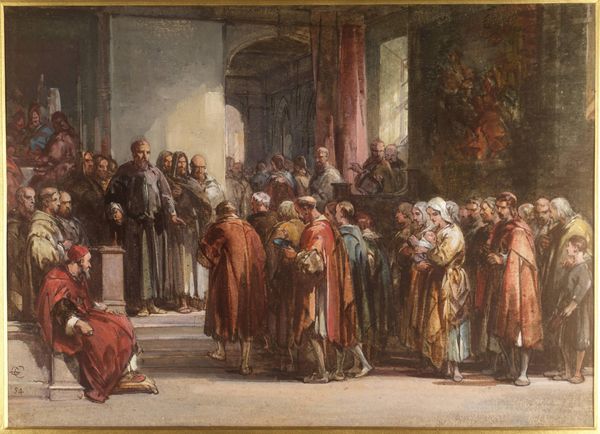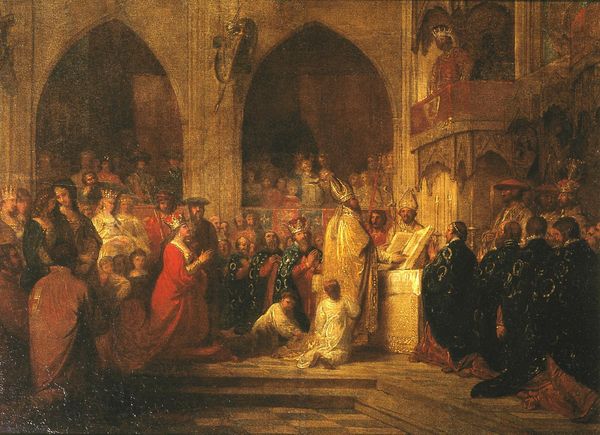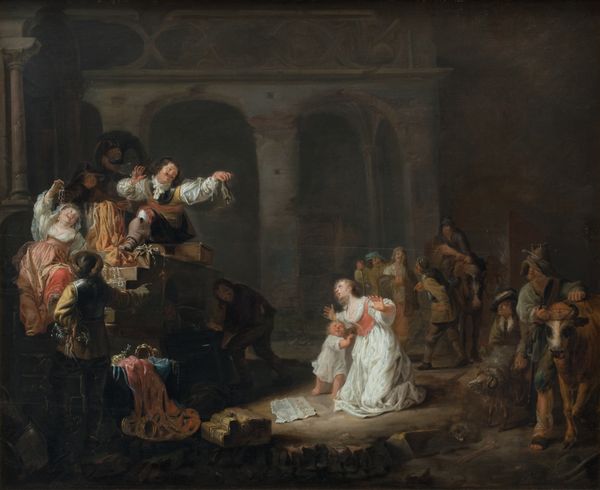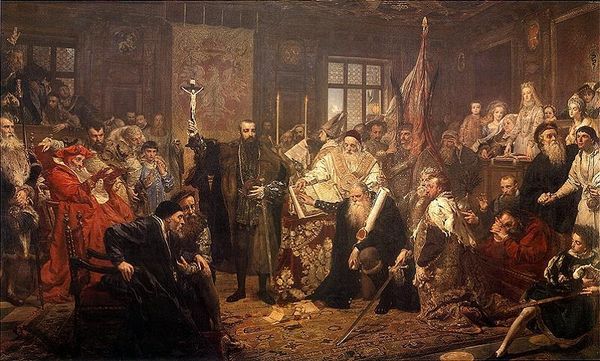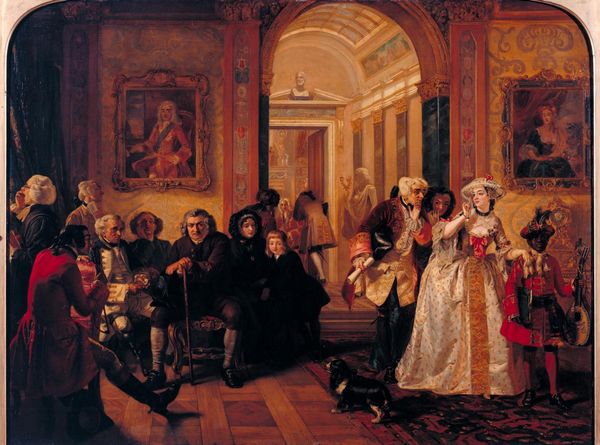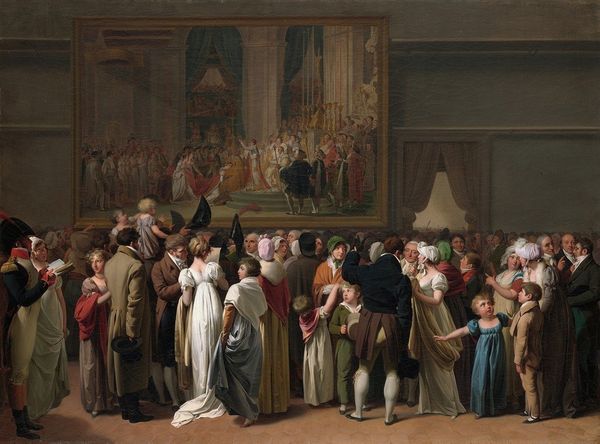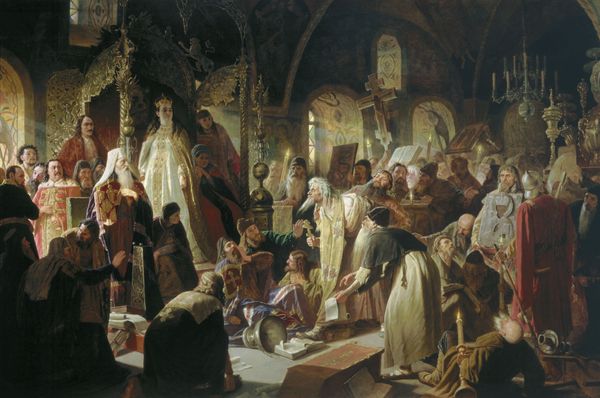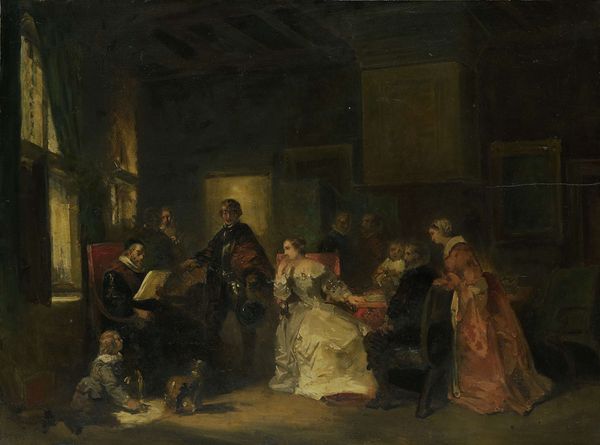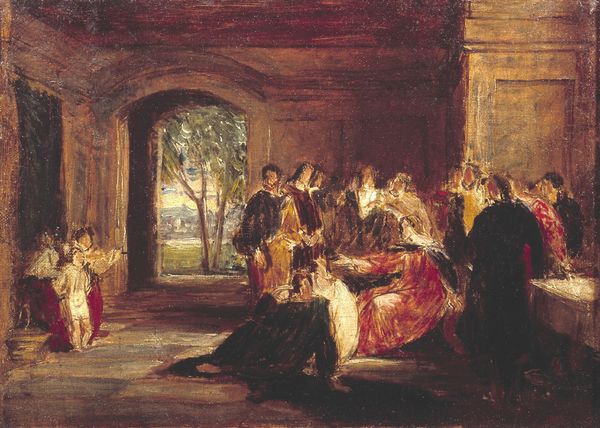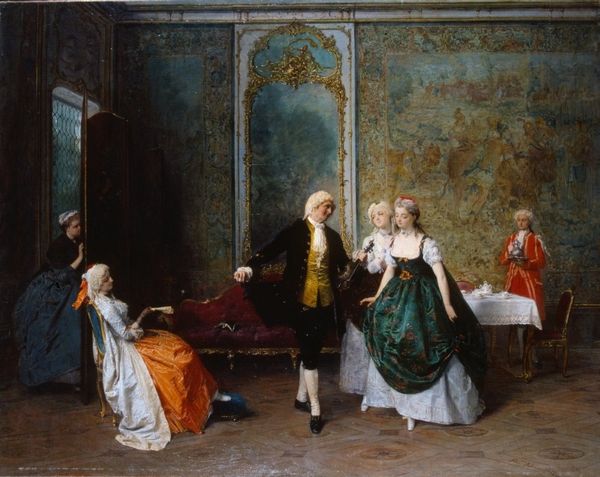
Dimensions: height 87 cm, width 130 cm, depth 15 cm
Copyright: Rijks Museum: Open Domain
Curator: Rochussen’s “Prince Maurits Receiving a Russian Delegation in 1614,” an oil painting completed in 1874, depicts a moment of formal exchange, a record of power dynamics visualized in a historical context. Editor: The initial impact is somewhat muted, I think. The earthy tones lend it a rather reserved character, and the lighting creates an air of somber formality. It feels very staged, almost performative, which somehow takes away from its energy. Curator: Consider the painting's relationship to coloniality. The Dutch Republic, actively expanding its influence globally, including through the Dutch East India Company. A Russian delegation serves as evidence of the reach, projecting power outwards, all while masking the inherent violence and exploitation within. The composition reinforces these power dynamics with the spatial arrangement of the figures. Editor: True, but on purely compositional grounds, notice the calculated arrangement of figures and forms, see how the orthogonals converge to emphasize Prince Maurits and how he becomes a focal point? There is an attention to geometric organization to the narrative of dominance you suggest. Curator: And there are ways the clothing and the space it takes, amplifies those structural elements of power: look at the dark clothes the Dutch are wearing behind the table and how, almost like a fence, a wall, those clothes create a boundary between the ones negotiating, the colonizer and the colonized, to speak figuratively. Editor: And yet the painting is also filled with minute textural details. Consider the fur-trimmed robes of the Russian delegates, the contrasting gleam on the table covering… There’s a tactile quality, which for a historic representation seems particularly pertinent, since history also contains the experience of the body in time. Curator: How do we view paintings like this through our contemporary lenses? As cultural institutions grapple with issues of decolonization and restitution, these paintings prompt necessary discussions. Editor: Agreed. And beyond its narrative content, I value how its elements, when carefully decoded, converge into an aesthetic and powerful statement. Curator: Indeed. A statement fraught with the complexities of history. Editor: It allows a reflection on painting itself and what makes its language able to depict relationships of power, that otherwise might go unnoticed.
Comments
No comments
Be the first to comment and join the conversation on the ultimate creative platform.
